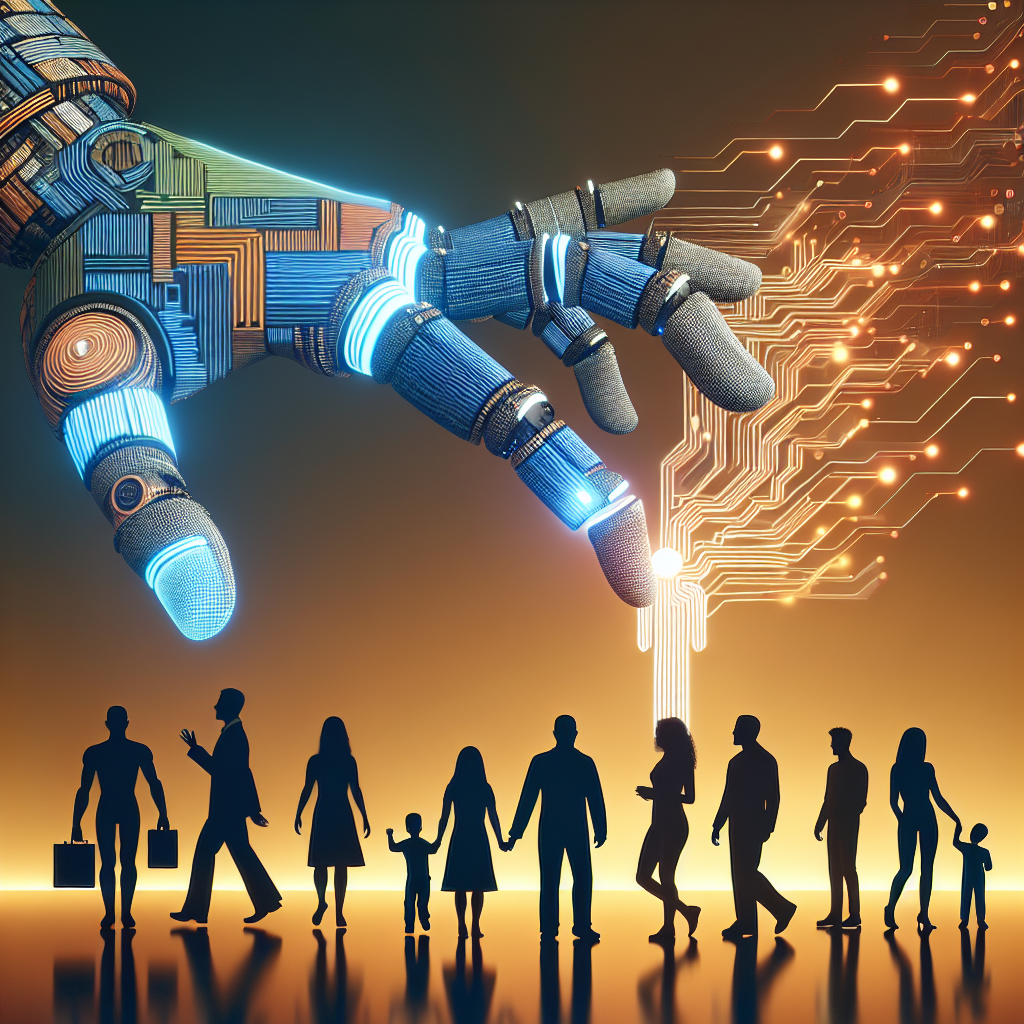Artificial Intelligence (AI) has rapidly advanced in recent years, offering a wide range of benefits and opportunities for society. From improving healthcare and transportation to enhancing cybersecurity and customer service, AI has the potential to revolutionize countless industries. However, as AI becomes increasingly integrated into our daily lives, concerns about its impact on human rights and civil liberties have also grown.
AI technology has the power to significantly impact human rights in both positive and negative ways. On one hand, AI can be used to enhance human rights by improving access to information, healthcare, and education. It can also help in detecting and preventing human rights abuses, such as human trafficking and online harassment. However, on the other hand, AI systems can also pose risks to civil liberties and human rights if not properly regulated and monitored.
One of the main concerns surrounding AI and human rights is the potential for bias and discrimination in AI algorithms. AI systems are only as good as the data they are trained on, and if this data is biased or flawed, then the AI system will produce biased results. This can lead to discriminatory outcomes in areas such as hiring, lending, and criminal justice. For example, a study by ProPublica found that a popular AI tool used by judges to assess the risk of recidivism in criminal defendants was biased against African American defendants, leading to harsher sentencing outcomes.
Another major concern is the lack of transparency and accountability in AI systems. Many AI algorithms are complex and opaque, making it difficult for users to understand how decisions are made or to challenge those decisions if they believe they are unfair or unjust. This lack of transparency can erode trust in AI systems and create barriers to accountability when things go wrong.
Furthermore, the widespread use of AI in surveillance and monitoring poses a threat to privacy and freedom of expression. Governments and corporations are increasingly using AI-powered tools to track individuals’ movements, behaviors, and communications, raising concerns about mass surveillance and the chilling effect on free speech. For example, facial recognition technology has been used by law enforcement agencies to monitor protests and track individuals without their consent, infringing on their right to privacy and freedom of assembly.
In addition, the use of AI in automated decision-making processes can also raise concerns about due process and the right to a fair trial. When AI systems are used to make decisions that have a significant impact on individuals’ lives, such as in the criminal justice system or in determining eligibility for social services, there is a risk that these decisions may be arbitrary, discriminatory, or lacking in accountability. Without proper safeguards in place, individuals may be deprived of their right to a fair and impartial hearing.
To address these risks, it is essential that governments, corporations, and civil society work together to develop ethical guidelines and regulations for the use of AI in accordance with human rights principles. This includes ensuring that AI systems are designed and deployed in a way that respects fundamental rights such as non-discrimination, privacy, transparency, and accountability.
Furthermore, there is a need for greater transparency and oversight of AI systems to ensure that they are fair, unbiased, and accountable. This can be achieved through mechanisms such as algorithmic impact assessments, independent audits, and human rights impact assessments to identify and address potential risks and harms.
In conclusion, while AI has the potential to bring about significant benefits for society, it also poses risks to civil liberties and human rights if not properly regulated and monitored. It is essential that we take proactive steps to address these risks and ensure that AI is used in a way that upholds and protects human rights for all.
FAQs:
Q: What are some examples of bias in AI algorithms?
A: Some examples of bias in AI algorithms include the use of biased training data that reflects historical discrimination, leading to discriminatory outcomes in hiring, lending, and criminal justice. For example, a study found that a popular AI tool used by judges to assess the risk of recidivism in criminal defendants was biased against African American defendants, resulting in harsher sentencing outcomes.
Q: How can we address bias in AI algorithms?
A: To address bias in AI algorithms, it is essential to ensure that training data is diverse, representative, and free from bias. This can be achieved through measures such as data auditing, bias testing, and algorithmic impact assessments to identify and mitigate bias in AI systems.
Q: What are some ways to improve transparency and accountability in AI systems?
A: To improve transparency and accountability in AI systems, it is important to make AI algorithms more interpretable and explainable to users. This can be achieved through measures such as algorithmic transparency, data governance, and external oversight mechanisms to ensure that AI systems are fair, unbiased, and accountable.
Q: How can we protect privacy and freedom of expression in the age of AI?
A: To protect privacy and freedom of expression in the age of AI, it is essential to establish strong data protection laws, privacy regulations, and safeguards against mass surveillance. This can be achieved through measures such as data minimization, encryption, and user consent to ensure that individuals’ rights to privacy and freedom of expression are respected and upheld.

